The Labor Movement and Organizations

Strikes!
This gallery contains early imagery of organized labor, including strikes, demonstrations, organizing efforts, and other related events. Topics include the 1913-1914 Copper Country Strike.
Please note that this gallery contains scenes of violence and casualty that some may find disturbing. Viewer caution is advised.
Curator: Elizabeth Clemens
There are 62 images in this gallery
Last updated: Wed, 10/03/2018 - 10:08
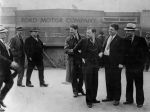
UAW (United Automobile Workers of America)
The United Automobile Workers of America (UAW) is the primary union within the American automobile industry. Founded in 1935, the UAW became one of the most powerful unions in the United States, both on the shop floor and within the American polity.
Visit the uaw.org Web site for more information about the UAW.
Curator: Elizabeth Clemens
Photos courtesy of UAW CollectionThere are 432 images in this gallery
Last updated: Mon, 02/20/2017 - 14:27
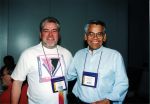
SEIU (Service Employees International Union)
The Service Employees International Union has always sought to organize workers in a wide range of occupations. Beginning with janitors and elevator operators when it formed in 1921, SEIU soon added security guards, window cleaners, health care workers, office workers and public sector employees. By 1968, the union represented service workers in over 100 occupations around the nation. This exhibit chronicles the union’s history of organizing and the people who made it happen.
Curator(s): Gavin Strassel, Alexandra Orchard, Louis Jones
Photos courtesy of Service Employees International Union CollectionThere are 1168 images in this gallery
Last updated: Mon, 04/08/2013 - 15:03
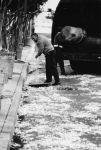
AFSCME
The American Federation of State, County, and Municipal Employees (AFSCME) traces its roots to Madison, Wisconsin where, in 1932, a small group of professional state employees organized to protect and promote the civil service. By 1936, the group gained recognition from the American Federation of Labor (AFL) and became AFSCME. By 1955 when the AFL merged with the Congress of Industrial Organizations (CIO), AFSCME’s composition was expanding to include blue-collar public employees, and it shifted its focus to collective bargaining. Since that time, AFSCME has grown to one of the largest unions in the AFL-CIO, boasting 1.4 million members today. AFSCME represents workers in a variety of roles including corrections, emergency services, education, health care, law enforcement, public administration, public works, housing, and transportation.
Curators: Johanna Russ, Meghan Courtney, Stefanie Caloia
Photos courtesy of AFSCME CollectionThere are 1361 images in this gallery
Last updated: Tue, 03/25/2014 - 09:50

ALPA (Air Line Pilots Association)
The Air Line Pilots Association was unofficially founded in 1930 and then officially in 1931, but its roots can be traced all the way back to the mid-1920's. The economic pressures of the depression, and increased flying hours with less pay are ultimately what lead to the formation of ALPA to protect pilot needs and rights. While initially formed in secret by a handful of pilots, ALPA grew steadily over time and by the end of World War II its membership approached 5,000 and had become a well-respected organization. Today it represents nearly 53,000 pilots at 37 U.S. and Canadian airlines and is the largest airline pilot union in the world. While representation and advocacy are major services to its members, safety and security has always been the most important service and for over 70 years ALPA has been part of most important safety improvement in the airline industry.
Curator: Maxfield Stepaniak
Photos courtesy of ALPA CollectionThere are 135 images in this gallery
Last updated: Mon, 09/16/2013 - 15:49
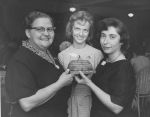
American Federation of Teachers
The American Federation of Teachers was founded in 1916 to represent the economic, social and professional interests of classroom teachers. Five divisions within the organization represent the broad spectrum of AFT's membership: teachers; paraprofessionals and school-related personnel; local, state and federal employees; higher education faculty and staff; and nurses and other healthcare professionals. In addition, the union includes more than 170,000 retiree members. Many well-known Americans have been AFT members, including John Dewey, Albert Einstein, Hubert Humphrey, Pulitzer Prize-winning author Frank McCourt, Nobel Peace Prize winner Elie Wiesel, former Senate Majority Leader and Ambassador to Japan Mike Mansfield, and former United Nations Under Secretary and Nobel Peace Prize winner Ralph Bunche.
Curator: Dan Golodner
Photos courtesy of American Federation of Teachers CollectionThere are 495 images in this gallery
Last updated: Thu, 10/02/2014 - 15:36
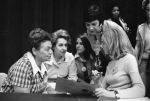
CLUW
The Coalition of Labor Union Women (CLUW) was founded in 1974 with the aim of increasing women’s involvement and influence in labor unions and consequently, the workforce. Their first national convention, held that year in Chicago, sought to establish women as full and equal participants in the labor movement through four main objectives: organizing more women; empowering women to fight discrimination; encouraging women to be politically active, particularly concerning affirmative action; and urging women to aspire to leadership. The Coalition provides a forum for women to share commons concerns and unite in addressing these concerns and strengthening their position across individual labor unions. CLUW remains today as the only national organization dedicated to the support of women in the labor movement, with members representing 54 different unions in the U.S. and Canada.
There are 26 images in this gallery
Last updated: Tue, 04/10/2012 - 12:32
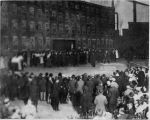
Industrial Workers of the World
During its long and often arduous existence, the Industrial Workers of the World (IWW) has been influential beyond its size. Often known by their nickname, the “Wobblies,” the IWW was founded in 1905 by a polyglot of militant unionists and political leaders. The Wobblies made a name for themselves by organizing workers who had been ignored by nearly everyone else in American labor: women, African-Americans, immigrants, and even migrant farm workers who rode the rails across America’s agricultural heartland looking for work. Despite many hardships, the IWW still is functioning today and continues the fight.
Curators: Mary Wallace and Elizabeth Clemens
Description author: Tom Featherstone
Photos courtesy of Industrial Workers of the World CollectionThere are 493 images in this gallery
Last updated: Mon, 03/24/2014 - 15:53
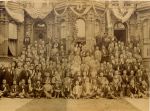
National Association of Letter Carriers
Letter Carriers answered a call to meet in Milwaukee in 1889, with the intention to form a national association to ensure improved salaries, better working conditions, and greater security for letter carriers and their families. Today, the National Association of Letter Carriers (NALC) continues its efforts while representing over 300,000 active and retired city letter carriers from 2,500 branches across the country.
Curator: Kathryn Dowgiewicz
Photos courtesy of National Association of Letter Carriers CollectionThere are 25 images in this gallery
Last updated: Wed, 03/09/2011 - 14:20
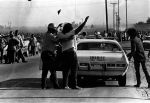
United Farm Workers
The United Farm Workers of America is the most influential farm-labor union in America. Founded in southern California, in the small San Joaquin Valley agricultural town of Delano in 1962, and led by Cesar Chavez, Dolores Huerta and others, the United Farm Workers of America (UFW) has ceaselessly battled some of the most powerful forces in the agribusiness industry in an attempt to organize farm laborers, raise wages and improve working conditions. Currently Arturo Rodriquez, Chavez’s son-in-law, a union veteran and boycott organizer, heads the UFW and continues to work to organize farm workers.
Curator(s): Kathy Schmeling, Elizabeth Clemens
Photos courtesy of United Farm Workers CollectionThere are 443 images in this gallery
Last updated: Fri, 10/22/2010 - 10:25
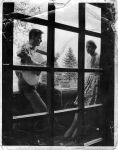
Utah Phillips
Utah Phillips was a well known as a folk singer, performer, storyteller, and activist. Throughout his life and career, Utah was one of the most prominent modern advocates for the Industrial Workers of the World IWW and was oftentimes compared to early Wobbly troubadour Joe Hill for his ability to convey working class messages and support for the One Big Union through his songs and performances. In addition to being a steadfast member of the IWW, Utah was also involved in more general labor activism and organizing, peace and anti-war activism, environmental activism, advocacy for hoboes and the homeless, and other political and social causes.
Curator(s): Alexandra Orchard, Dallas Pillen
Photos courtesy of Utah Phillips PapersThere are 25 images in this gallery
Last updated: Mon, 10/13/2014 - 15:59

1932 Ford Hunger March
Large and momentous labor related demonstrations are nearly synonymous with Detroit history. The 1932 Ford Hunger March marks one such instance. As the marchers proceeded from Detroit to Ford's River Rouge Complex, violence ensued. When the dust had settled, dozens of marchers had been injured with five losing their lives. The subsequent funeral procession down Woodward Avenue for those slain drew numbers in the tens of thousands.
Curator: Elizabeth Clemens
Photos courtesy of multiple collectionsThere are 24 images in this gallery
Last updated: Fri, 03/18/2011 - 15:40
